Gaming on a PC offers some of the most immersive experiences available today, but even the best gaming rig can start to show its age or struggle with newer titles. Whether you’re a competitive gamer or just want to enjoy AAA titles at their best, optimizing your PC for gaming can make a huge difference in performance, graphics, and overall enjoyment.
We’ll walk you through the essential steps to optimize your PC for gaming, from hardware upgrades to software tweaks, ensuring that you get the best possible gaming experience.
1. Upgrade Your Hardware in your Gaming PC for Maximum Performance
A powerful gaming setup starts with the right hardware. While a high-end gaming PC is ideal, even budget builds can be optimized to improve performance.
Upgrade Your GPU (Graphics Card)
The graphics card (GPU) is the heart of your performance on a gaming PC. If you’re playing graphically demanding games or want to play at higher resolutions and frame rates, upgrading to a more powerful GPU can give you a significant performance boost. For a smoother experience, aim for a GPU that supports technologies like Ray Tracing or DLSS (Deep Learning Super Sampling), which can improve visuals without compromising frame rates.
Increase RAM
For gaming PCs, 16GB of RAM is typically the sweet spot. However, some modern titles, especially open-world games or those that involve large maps and high-detail textures, might benefit from 32GB. Upgrading your RAM ensures smoother multitasking (e.g., running Discord or streaming while gaming) and reduces the risk of slowdowns.
Upgrade Your Storage to an SSD
Solid-state drives (SSDs) significantly outperform traditional hard drives (HDDs) in terms of speed, loading times, and overall responsiveness. Installing your games on an SSD rather than an HDD can drastically reduce loading times, making your gaming experience feel faster and more responsive.
If you have small storage needs, consider using a PCIe NVMe SSD. These drives offer the fastest speeds, especially useful for games with large world maps or high asset requirements.
Improve CPU Performance
The processor (CPU) may not always impact frame rates as much as the GPU, but it’s still an essential part of gaming performance. If you’re running an older CPU, upgrading to something more modern (e.g., an Intel Core i7 or i9, or an AMD Ryzen 7 or 9) can help in CPU-heavy games and multitasking scenarios.
This is especially true if you upgrade to AMD’s X3D series of processors, which are equipped with extra cache, and are often considered the best gaming processors of their generation.
2. Tweak Software Settings for Optimal Gaming Performance
Even with top-tier hardware, software optimizations are key to getting the most out of your system.
Update Your Drivers
Keeping your GPU drivers up to date is essential for maintaining peak performance on your custom gaming PC. Graphics card manufacturers like Nvidia and AMD frequently release updates that optimize their hardware for new games, add new features, and improve stability.
This is especially important for brand new games, both vendors will often update their drivers on launch day of new games, specifically for that game.
Don’t forget about other drivers, such as your motherboard chipset or network adapter, as these can also have an impact on performance.
Adjust In-Game Settings
Not all games are created equal, and their default settings may not always be optimized for your hardware. If you’re aiming for higher frame rates or more stable performance, try lowering specific settings like:
- Resolution: Reducing your resolution (e.g., from 4K to 1080p) can boost frame rates significantly.
- Anti-Aliasing: This visual effect smooths jagged edges but can be demanding on your system. Lowering or disabling it can improve performance.
- Shadow Quality: High-quality shadows look great, but they can be performance-intensive. Lowering shadow quality can yield better frame rates with minimal visual sacrifice.
Additionally, V-Sync (vertical synchronization) can be disabled if you’re experiencing input lag, but be aware that it might introduce screen tearing. Consider using G-Sync (Nvidia) or FreeSync (AMD) if your monitor supports them.
You’ll have to experiment from game to game, as some games will lean on different parts more than others, resulting in scenarios where some options will do nothing to impact performance, from lowest to highest.
3. Optimize System Performance and Reduce Latency
Latency and system responsiveness are often overlooked when optimizing a gaming PC, but they’re critical for a smooth experience.
Close Unnecessary Background Processes
Running too many applications in the background can eat up precious system resources. Before gaming, close any unneeded programs such as browsers, email clients, or music players. You can also use the Task Manager to see which processes are consuming CPU or RAM and shut them down manually.
Disable Startup Programs
Many programs start automatically when you boot up your computer, which can slow down your PC and consume resources. To disable unnecessary startup programs:
- Open Task Manager (Ctrl + Shift + Esc).
- Go to the Startup tab.
- Right-click on unwanted programs and select Disable.
Adjust Power Settings
Ensure that your PC is using the highest performance power plan, especially if you’re gaming on a laptop. In Windows, go to Control Panel > Power Options and select the High Performance plan. This ensures your CPU and GPU are running at full power while gaming.
Optimize Network for Online Gaming
For online gaming, network latency can be just as important as hardware performance. To reduce lag and improve your connection:
- Use a Wired Connection: Ethernet connections are more stable and faster than Wi-Fi.
- Close Bandwidth-Heavy Applications: Ensure other devices on your network aren’t using up bandwidth by streaming video or downloading large files.
4. Maintain Your System for Longevity
Regular maintenance is key to ensuring your PC runs smoothly over time. Dust buildup can overheat your components and cause performance throttling, while outdated software can become a performance bottleneck.
Clean Your PC Regularly
Dust and dirt can accumulate inside your PC, clogging fans and air vents, which results in higher temperatures and throttled performance. Periodically open up your case and use compressed air to clean out dust from your components. Ensure all fans are working correctly.
Keep Your System Updated
It’s important to install Windows updates and game patches regularly. Many updates address performance improvements, bug fixes, and compatibility issues.
Monitor System Temperatures
Overheating can reduce your system’s performance or cause instability. Use software like HWMonitor or MSI Afterburner to track the temperatures of your CPU, GPU, and motherboard. If temperatures are too high, consider improving your case airflow or upgrading your cooling solution (e.g., installing additional fans or switching to liquid cooling).
Conclusion
Optimizing your PC for gaming involves a combination of hardware upgrades, software tweaks, and regular maintenance. By ensuring that your system is properly configured and running at its best, you can enjoy smoother gameplay, faster load times, and a more responsive gaming experience. Whether you’re playing single-player titles with stunning graphics or engaging in high-stakes multiplayer action, these optimizations will help you stay ahead of the game.
By following these steps, you’ll be well on your way to optimizing your PC for gaming—and ready to tackle the latest and greatest titles with ease.


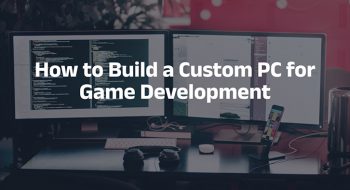
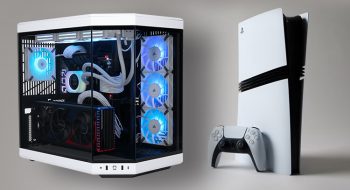

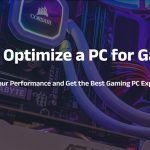
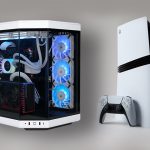
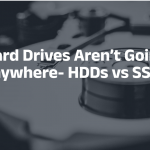

No comments yet